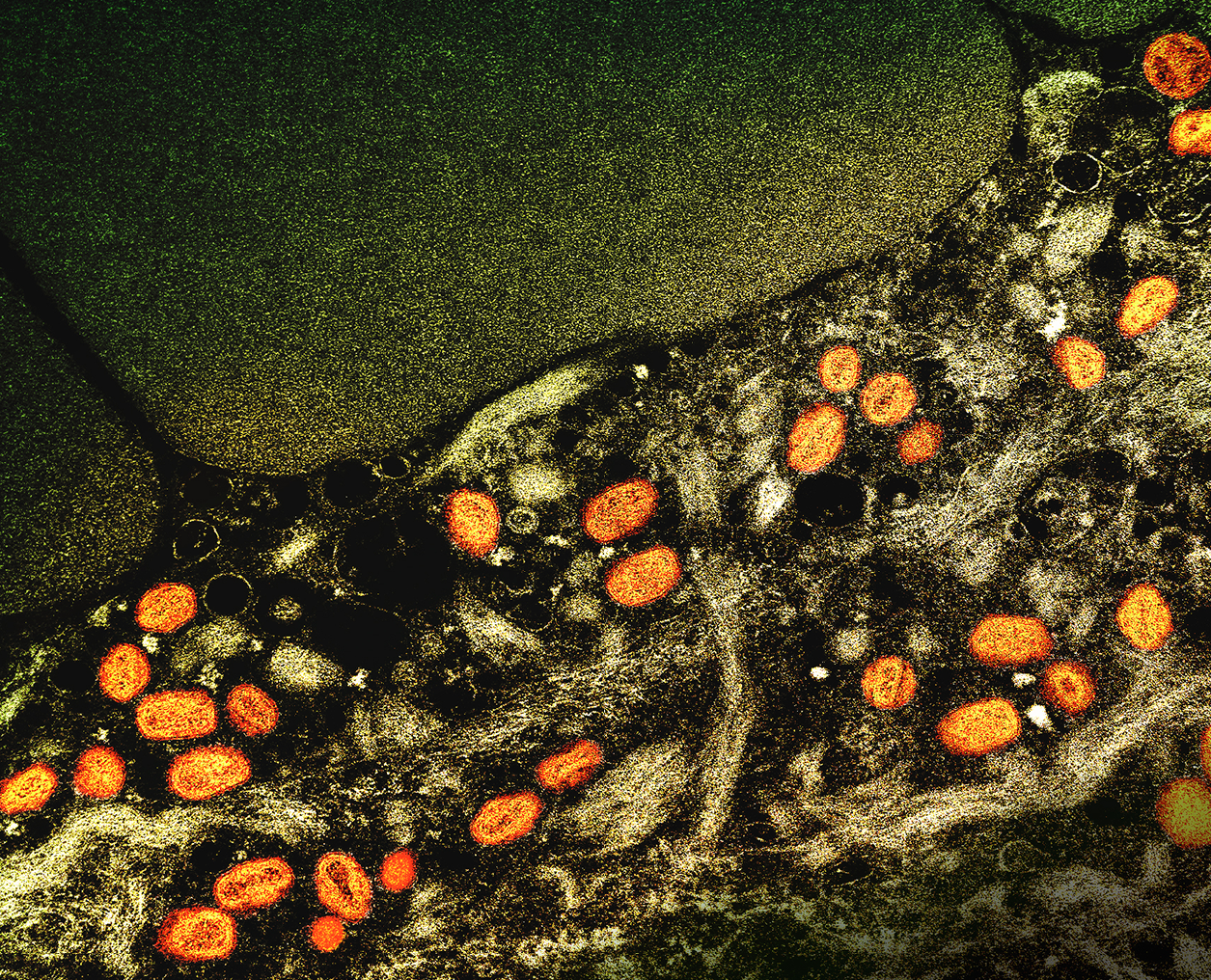A recently published article in the journal JAMA Medical News & Perspectives has stated that some monkeypox infections may be asymptomatic or very mildly symptomatic and, thus, can easily remain unnoticed. This statement has been made based on two recent case reports from Europe. Medical News & Perspectives - Reports of Asymptomatic Monkeypox Suggest That, at the Very Least, Some Infections Go Unnoticed. Image Credit: NIAID
Medical News & Perspectives - Reports of Asymptomatic Monkeypox Suggest That, at the Very Least, Some Infections Go Unnoticed. Image Credit: NIAID
Monkeypox outbreaks
The most recent outbreaks of monkeypox virus since May 2022 have caused almost 48,000 infections in over 99 countries across the world. This estimate has been published by the US Centers for Disease Control and Prevention (CDC), which is considered the largest documented outbreak in mostly non-endemic countries.
The majority of recent monkeypox infections have been observed among men who have sex with men (MSM). This has prompted scientists and physicians to consider sexual contact as the primary route of viral transmission during recent outbreaks.
Two recent case reports from Belgium and France have highlighted that monkeypox infection can be asymptomatic.
In the Belgian study, four MSM tested positive for monkeypox infection during a routine screening of sexually transmitted infections. Of four patients, three were asymptomatic at the time of testing and remained symptom-free over a period of around three months post-diagnosis.
In the French study, monkeypox infection was detected in 13 asymptomatic patients. Only two developed symptoms later and visited the clinic for medical assistance.
Marjan Van Esbroeck, a clinical microbiologist at the Institute of Tropical Medicine, Belgium, has stated, “these studies suggest that in contrast to what was known about monkeypox in Africa, not all the patients present with symptoms.”
Are these infections asymptomatic or subtle?
Researchers noted that although the patients were asymptomatic during the study period, there was a possibility of unrecognized symptoms.
Given the fact that the patients were not examined physically at the time of sample collection, Van Esbroeck mentioned, “We cannot exclude that minor lesions have been overlooked or that general symptoms like mild fever or malaise were not recalled by the persons.”
In support of this notion, evidence demonstrates that the monkeypox virus has been circulating undetected in non-endemic countries for some time before the detection of the first case in the UK in May 2022.
Overall, these observations suggest that patients with monkeypox infection may develop very subtle symptoms that often remain unrecognized by physicians and patients. This raises the question if patients with subtle symptoms can infect others.
Is asymptomatic transmission possible?
Studies investigating the possibility of asymptomatic transmission of the monkeypox virus identified asymptomatic patients with high viral load during the recent monkeypox outbreaks in Europe. Furthermore, the Belgian study detected replication-competent monkeypox virus in anogenital swabs of asymptomatic patients.
These observations highlight the risk of unintentional viral transmission from asymptomatic patients. In this context, Van Esbroeck mentioned, “the difference between completely asymptomatic patients and patients with unrecognized minor symptoms is theoretical. Both will have the consequence that persons do not isolate themselves and potentially continue to have high-risk behavior.”
As stated by Boghuma Kabisen Titanji, an assistant professor of medicine at Emory University, in many patients with monkeypox infection, the only noticeable symptom is pain during swallowing, which can be easily overlooked as a symptom of monkeypox infection.
In some patients, lesions are not present on the skin but can be found by physicians in the larynx or rectum. She specifically mentioned, that monkeypox infections “can look and sound like a lot of things that we see in clinical practice,” and that “Monkeypox is an incredible mimic.”
According to the expert’s opinion, both physicians and patients should be aware of the range of clinical symptoms associated with monkeypox infection. This will help rapidly identify even a very subtle symptom, which is vital for timely detection and therapeutic management of monkeypox infection.
Measures to identify asymptomatic infection
Because of the high testing cost, not all patients with high-risk behaviors can be tested for monkeypox.
Given the sharp rise in monkeypox cases during recent outbreaks, Abraar Karan, an infectious disease physician at Stanford University, predicted that the shedding of infectious virus from asymptomatic or mildly symptomatic patients is very likely.
To better understand the potency of asymptomatic infections to spread the virus, frequent physical examinations and testing are required in exposed persons to monitor the clinical evolution of the infection.
As suggested by Abraar Karan, population-level serological testing might be effective in understanding the extent of undetected infections. However, it is not possible now because no monkeypox-specific serological tests are available on the market.
Douek, chief of the Human Immunology Section at the NIAID’s Vaccine Research Center, is currently developing a monkeypox-specific assay in collaboration with poxvirus experts at the CDC.
Douek said, “Presumably, we will be catching any instances of asymptomatic monkeypox infection because there will be people potentially who have antibodies against monkeypox but no recorded symptomatic history of actual known infection.”
Successful development of this assay will help monitor the dynamics of monkeypox transmission among high-risk populations, including MSM, sex workers, and people residing in endemic countries.